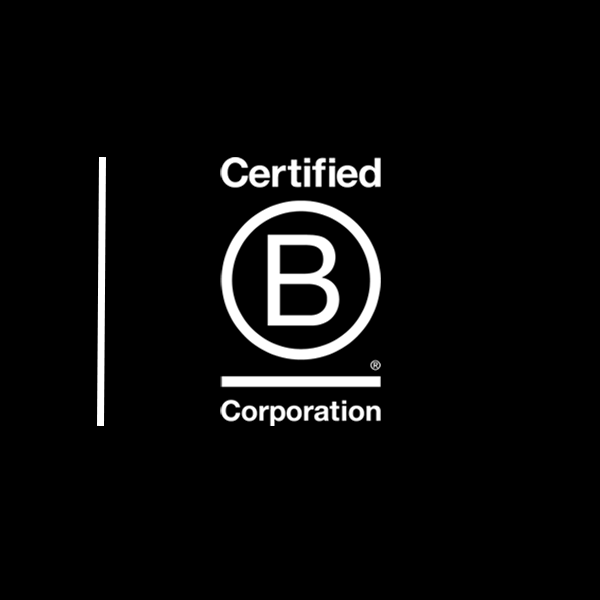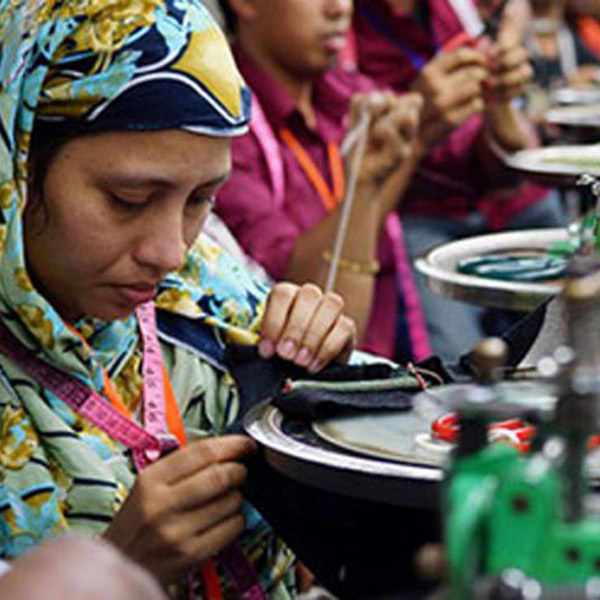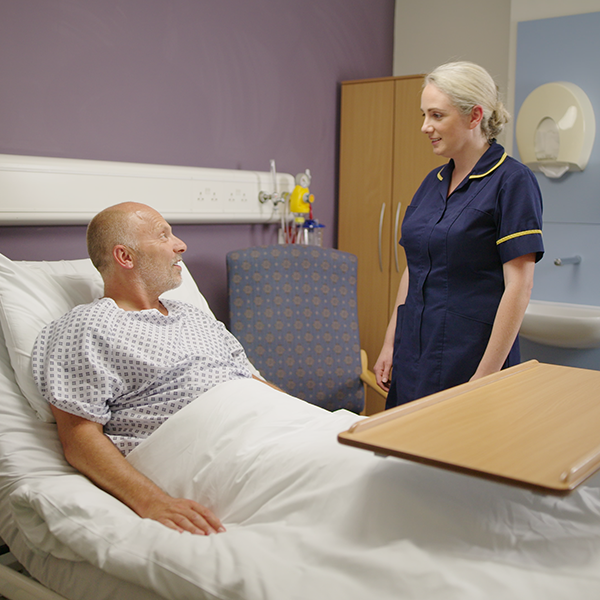Ten years ago this week, working as a Video Journalist for the BBC, our Founder and Creative Director Tom Chown travelled to the North Pole with colleague Mark Norman.
Published: April 2016
They were following marathon runner Kate Charles from Brighton, on her mission to complete a marathon on all seven continents and at the North Pole. This is Tom’s diary. I first met Kate when she contacted the BBC South East newsroom after she’d completed her 7th marathon in the Antarctic. It took nine months to pitch the story to News Editors, plan and raise the budget.
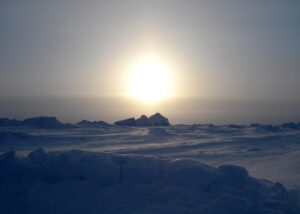
24 hour daylight at the North Pole
We were offered media spots by the race organisers from Longyearbyen in Spitzbergen to Base Camp Barneo, where the race takes place. But I still needed to raise the budget for our flights to Norway, accommodation and purchase specialist clothing for temperatures of -40 degrees. With support from my Editor Quentin Smith I set about approaching BBC Sport and BBC News to raise internal funds.
HOW DO YOU TRANSMIT TV FROM THE NORTH POLE?
In 2006 there were no satellites with enough bandwidth to transmit a video signal orbiting the North Pole. Since we would only spend 48 hours at Camp Barneo, we planned to edit our news packages in Longyearbyen. Working with technicians at BBC Television Centre in London we were loaned two laptops, one with AVID software to edit, the other to encode and transfer the file to the UK. A decade later and we use a mobile phone as a modem with a laptop, but in 2006 this technology didn’t exist.
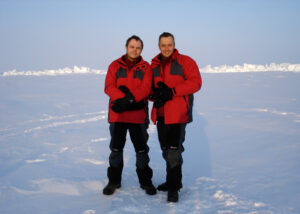
Video Journalist Tom Chown and Reporter Mark Norman
The other major issue to address was filming in such hostile conditions. Mark and I needed specialist clothing to protect us from frostbite. We also had to consult with camera manufacturer Sony, to find out how their HVR-Z1E model would stand up to the -40 degree temperatures.
Sony couldn’t guarantee the camera would operate below 0 degrees. We to tested our equipment at Brighton University’s Sports Faculty, in Eastbourne, where their training freezer could get down to -10 degrees. We also planned to store the cameras in unheated boxes at the North Pole to avoid getting condensation inside the lenses. At these temperatures the condensation would then freeze when taken outside, breaking the cameras and ending our trip.
TRAVEL
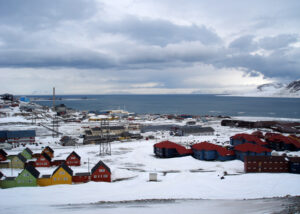
Longyearbyen, Svalbard
We flew from Heathrow to Oslo, taking with us three video cameras, two laptops, tripods and associated kit, and our polar clothing for the 7 day trip.
The next day we flew via Tromso all the way up to the Norwegian Svalbard islands, the most northerly civilisation in the world. We based ourselves at the Raddison hotel in Longyearbyen, where the North Pole marathon competitors convened for acclimatisation.
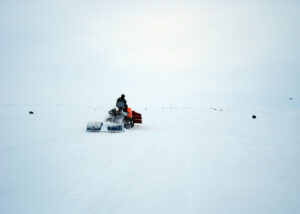
Ice runway at Base Camp Barneo
After a couple of days’ delay in Longyearbyen, due to bad weather at the base camp, we got the call to depart for Barneo on the afternoon of Friday 7th April 2006. Embedded with the first group of competitors and the race organisers we boarded the first plane to the camp.
ARRIVAL AT THE NORTH POLE
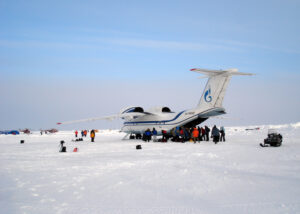
Unloading the AN-74 at Base Camp Barneo
At Camp Barneo an ice runway is cleared from the snow drifts by a bulldozer. It’s approximately 1km long, just long for the Anatov-74 aeroplanes to land. Not only can these Russian cargo planes take off in a short distance, but they can also land on very short stretches of flat terrain, ideal for the conditions at Barneo.
Coming into land, and without a window to look out of, never have I been more appreciative of the pilots’ skills as they successfully touched down, without breaking the short ice runway. It was almost midnight when we landed, but since the pole was in its six months of 24 hour daylight, the sky was a permanent haze of sunshine.
Accommodation at base camp consisted of heated tents, capable of housing approximately 20 people on shallow camp beds, each with a thermal sleeping bag for warmth. We stored our camera equipment in a wooden crate, packed with bubble wrap and pocket hand-warmers, and kept our dozen camera batteries inside the tent.
THE NORTH POLE MARATHON
The following morning the race organisers were keen to make the most of the good visibility. A circular route around Barneo Base Camp of just under 2km had been marked out with tiny flags whilst we’d slept. Runners would complete as many laps as necessary to achieve the 26.2 miles of a marathon.
The circuit went along the side of the runway, then off into the light powder of the snowy terrain. Avoiding big leads (breaks) where plates of ice had broken apart, or ridges where ice had risen up to form hills of ice terrain. Race doctors monitored the 52 competitors, whilst the Russians manning the camp stood guard with their rifles on the look-out for for polar bears.
TECHNICAL LOGISTICS
Before the race started Mark was able to do a two-way live report for BBC News 24 via our Bagem satellite phone, and then the race began. As the competitors set off down the side of the runway, Mark and I trudged our way through the snow, up to our thighs in some places, avoiding deep snow filled crevices. We had four layers of clothing, a base layer, thermal layer, then clothing layer, and finally our outer Gortex coated winter ski jackets and salopettes.
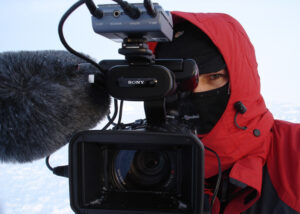
Video Journalist Tom Chown at the North Pole
It was our extremities that faced the most risk and operating fiddly buttons on a camera is not the easiest of jobs with mittens on. The practicalities of this meant the outer and more cumbersome gloves had to come off, but we had two further layers of gloves on to help trap warmth.
Our faces were the other possible area of risk; despite the bright sun temperatures were still around -20 to -25 degrees. But when the snow clouds blew in, the change in temperature was immediately noticeable.
We returned to the heated catering tents frequently to re-hydrate and warm up alongside the runners who required frequent breaks between laps of the circuit. Kate Charles crossed the finishing line after seven hours and 45minutes.
HELICOPTER to 90 DEGREES
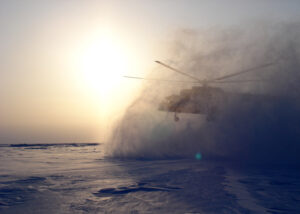
Helicopter trip to 90 degrees
The competitors were understandably triumphant, but exhausted. After a second night’s sleep at Barneo Base Camp, we were flown by helicopter for 40 minutes to the magnetic North Pole. We had an hour to take photos with a symbolic ‘North Pole’ pole that came out of the back of the helicopter. A few people had brought celebratory bottles of champagne with them, and we formed a large circle to walk ‘around the world’.
TAKING OFF FROM THE ICE
Back and Camp Barneo and with our bags packed I waited at the end of the ice runway to film our plane coming in to land. The AN-74 appeared through the snow-laden clouds without warning, other than the tremendously loud engines.
What we didn’t know at the time was that when the aeroplane landed it cracked the ice runway. As we boarded the plane to depart the pilot explained they were overloaded and asked if anyone would like to disembark and wait for the next flight. Nobody volunteered, so a member of the the base camp stood by the break in the runway as a marker for the pilot to safely lift-off before.
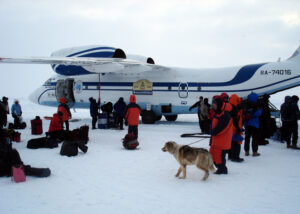
Preparation to depart Base Camp Barneo
When you fly in an AN-74, you can feel the extra G-force upon take-off. It’s much quicker than a conventional commercial passenger flight as you’re thrust back in your seat. I had an iPod with me and clearly remember listening to Fat Boy Slim’s ‘Bird of Prey’ as we waited to depart. There’s a very slow build up in that track, and as the beat dropped the pilot launched us down the runway. The plane’s nose lifted a few metres before the crack in the ice, up into the Arctic sky.
FAST TURNAROUND FOR BBC NEWS
Touching down in Svalbard a couple of hours later, Mark and I had almost three hours of footage to ingest and edit overnight, before we were due to send our report back to the UK for broadcast on the Monday. Despite having spent the weekend with little sleep, the adrenaline of the adventure carried us through the scripting and editing. We sent our report over the hotel’s internet to BBC Television Centre in London, packet by packet (a technical term for data transfer). From there the regional newsrooms were able to receive the relevant package for each news programme.
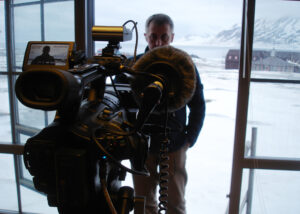
Mark Norman broadcasts live to the UK
We managed to deliver a live from Svalbard into the Monday evening BBC news bulletin, via the internet. We’re led to believe that in 2006 the speed of filing pictures from the North Pole within 24 hours of return was a global first.
Ten years later the whole adventure remains a truly unique experience. Having the opportunity to stand at the top of the world, and being lucky enough to do it for work was a privilege and something that will stay with me for a long time to come.


